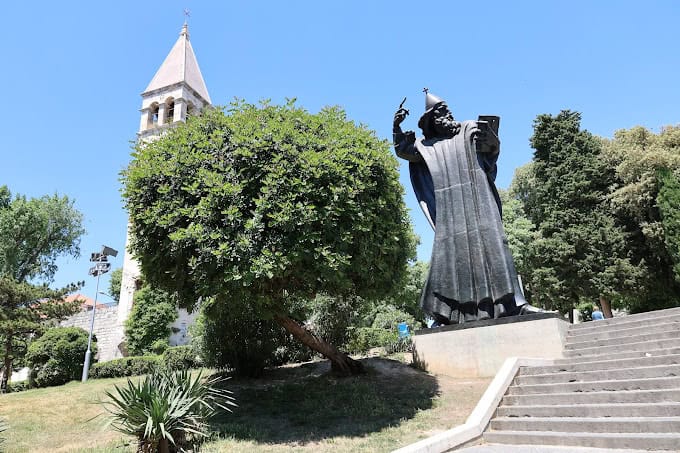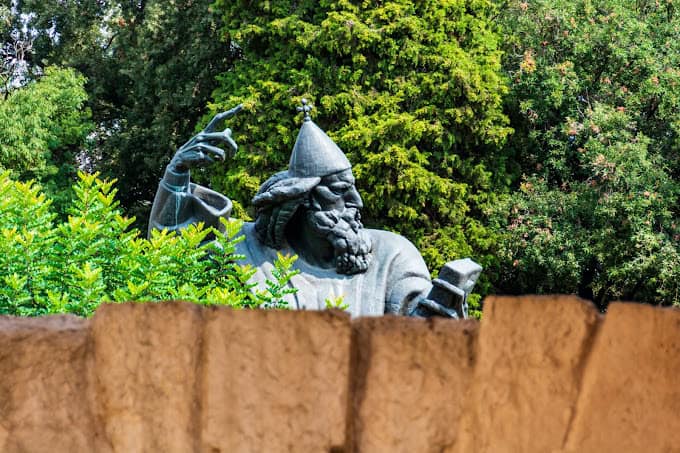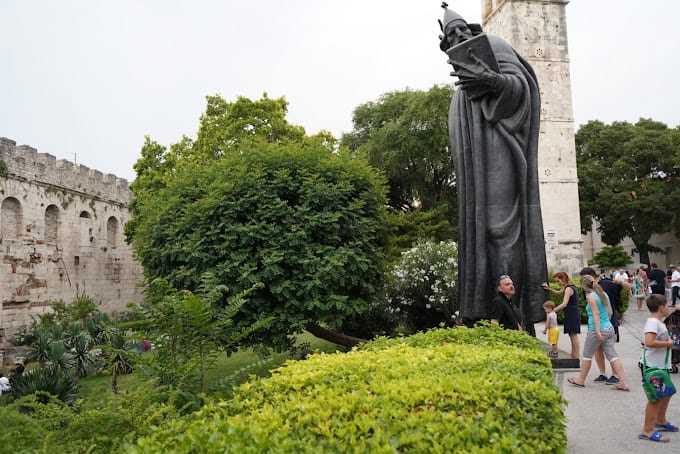Located in the heart of Split, Croatia, the Gregory of Nin statue is not just a remarkable piece of art but also a symbol of Croatian pride and history.
Towering over the bustling streets of the ancient city of Split, the statue has become an essential stop for tourists and a revered emblem for locals.
If you’re planning a visit to Split, learning about this monument can provide deeper insight into Croatian culture and history.
Who Was Gregory of Nin?
Gregory of Nin (Grgur Ninski in Croatian) was a medieval bishop who played a pivotal role in the early Christian Church in Croatia during the 10th century.
He is celebrated for his efforts to promote the use of the Croatian language in religious services, which was a bold move at the time when Latin was the dominant language of the Church.
By advocating for the vernacular, Gregory aimed to make Christianity more accessible to the common people, thereby fostering a sense of national identity and unity among Croats.
The Statue: A Masterpiece by Ivan Meštrović
The Gregory of Nin statue in Split is the work of renowned Croatian sculptor Ivan Meštrović, who is often considered one of the greatest sculptors of the 20th century.
Created in 1929, the statue stands at an impressive 8.5 meters (28 feet) tall and is made of bronze. Meštrović’s work is characterized by its attention to detail, and the Gregory of Nin statue is no exception.
The bishop is depicted holding a book in one hand and raising the other in a gesture of blessing, symbolizing his commitment to education and faith.
A Symbol of Resistance and Identity
The statue was originally erected in the Peristyle, the central square of Diocletian’s Palace, but it was moved to its current location near the Golden Gate (Zlatna Vrata) in the 1950s.
This relocation was part of a broader effort to preserve the historic integrity of the palace while also ensuring the statue remained a prominent feature of the city.
Over the years, the statue has become a symbol of resistance against oppression, particularly during periods when Croatian culture and language were under threat.
Gregory’s legacy as a defender of the Croatian language resonates deeply with the local population, making the statue not just a tourist attraction but also a symbol of national pride.
The Tradition of Good Luck
One of the most interesting aspects of the Gregory of Nin statue is the local belief that rubbing the statue’s big toe brings good luck.
As a result, the bronze toe is noticeably polished and shiny from the countless visitors who have touched it over the years.
Whether you are superstitious or not, taking part in this tradition is a fun and memorable way to connect with local customs.
How to Visit the Gregory of Nin Statue
The Gregory of Nin statue is conveniently located near Split’s historic center, making it easily accessible for visitors. It is situated just outside the Golden Gate, one of the four main entrances to Diocletian’s Palace, which is a UNESCO World Heritage site.
Best Time to Visit: Early morning or late afternoon is ideal for avoiding crowds and capturing stunning photos in the soft Mediterranean light.
Nearby Attractions: After visiting the statue, you can explore Diocletian’s Palace, the Cathedral of Saint Domnius, and the nearby markets, all within walking distance.
Guided Tours: Consider joining a guided walking tour of Split, which often includes the Gregory of Nin statue as part of the itinerary. This can provide you with more historical context and interesting anecdotes.
Final Thoughts
The Gregory of Nin statue is more than just a monument; it’s a testament to Croatia’s enduring cultural heritage and the spirit of its people.
Whether you’re a history enthusiast, an art lover, or simply a curious traveler, this iconic statue is a must-see when visiting Split.
Its imposing presence, combined with the rich history it represents, makes it one of the most significant landmarks in Croatia.
Don’t forget to rub Gregory’s toe for good luck—you’ll be participating in a tradition that connects you with millions of visitors who have done the same before you.



